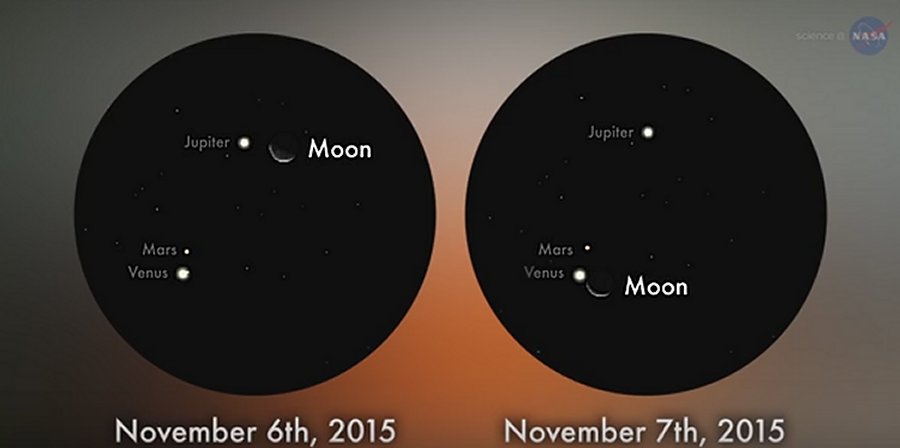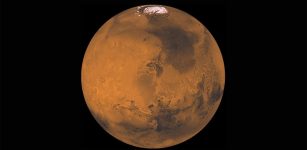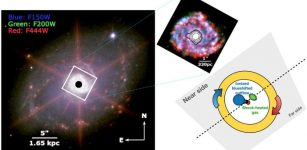Beautiful Rare Close Encounter Of Venus, Jupiter And Mars: Last Time Until 2021
MessageToEagle.com – Look east before sunrise in late October! Take a look out the window. Three bright planets are converging in the eastern sky–and the view is an eye opener.
Although any morning in late October is a good time to look, the six day stretch from Oct. 24th through the 29th is the best.
That’s because during this time, the triangle of planets will shrink until it is less than five degrees wide.
Every morning in late October, Venus, Jupiter, and Mars will rise in the east an hour or so before the sun. Together, they form a triangle in the pre-dawn sky. Venus and Jupiter are the brightest vertices–visible even after the black pre-dawn sky turns cobalt blue.
Once you find them, you will have little trouble locating the dimmer Red Planet, which completes the triangle while the sky is still black.
Of greater significance, however, is what you can see through binoculars. Typical binoculars can see a patch of sky about six or seven degrees wide. So when the triangle of planets shrinks to five degrees, they will all fit inside a binocular field of view. Imagine looking through the eyepiece and seeing three planets–all at once. This rare and beautiful sight is what is waiting to help wake you up starting on the 24th of October.

In addition to the planets are the moons … Jupiter’s moons: Io, Europa, Ganymede, and Callisto. 3 or 4 of these giant satellites will typically be visible if the binoculars are held steady by leaning on something sturdy or by mounting them on a tripod.
The configuration of the moons will be different every morning.
By the time October comes to an end, the planetary triangle will start breaking apart. But there are still two dates of special interest: Nov. 6th and 7th. On those increasingly wintry mornings, the crescent Moon will swoop in among the dispersing planets for a loose conjunction guaranteed to dislodge the “sleep in your eyes.”
On the 6th it will be close to Jupiter. By the 7th it is just past Mars and Venus.
MessageToEagle.com
via Science NASA










